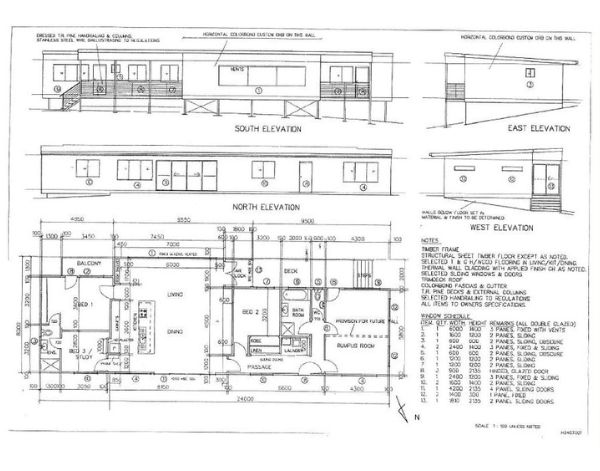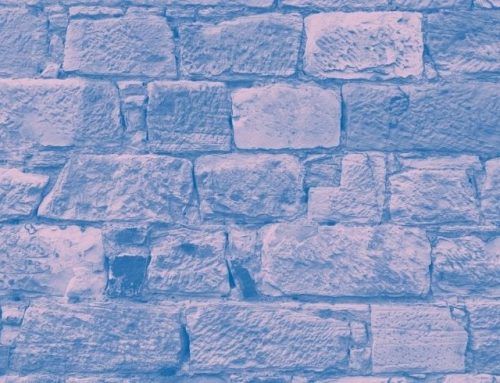
This one time I got hooked on architecture and building design
paul’s experiences with building and design led him to better appreciate the ‘use’ value of a home
I’ve never been one for what goes on inside churches but I have always been observant of cathedrals as part of the built environment. As a child I can remember looking at the intricate designs of church buildings; their scale, the pitch of the roof, the materials, the ornaments. Although I didn’t (and still don’t) have the language to describe what I saw, I knew it was different to the home I lived in, and that it was the result of human design and labour – probably very hard labour when you consider the limited machinery available when many of the grand buildings in northern Tasmania were built in the early 19th century.
My first encounter with building design and builders was when Mum and Dad built our Franklin Street house in the early 1980s. The block, immediately adjacent to the Scout Hall and public tennis court, was long and vacant. Dad paced it out, and hammered stakes into the sandy soil showing the dimensions of the house. He described in words what was to be built, but I couldn’t picture it in my mind. It wasn’t until the builders arrived weeks later to commence the foundation work that I secured a copy of the building drawings. Stuck to a piece of chip board and laminated for all weather use, the drawings came alive in my head. As our new home came out of the ground I could align what I saw with what was on the page. It was at this moment I think I became hooked.
Six years later, at the start of high school, we were asked to choose subjects. On offer in the second half of the year was technical drawing. I wanted in. The slanted desks, the octopus arm like rulers, the funny lead pencils; I wanted to learn how to draw houses. As luck would have it, we had actually kept the builders blue print for our house build, it was stashed in the ceiling cavity. I dug it out, assessed it again, and I was determined to understand it better. Our first teacher was nearing retirement, and was a gem. His replacement was a newer graduate, and he had energy and patience and was a great support. It was an era before Computer Aided Design (CAD) and we learned the manual way of drawing elevations, and sections, and how to label the work to communicate to the end user clearly.
I continued the subject throughout high school. In Year 10 my best friend and I visited his older brother’s newly built house. We climbed up in to the roof cavity and crawled around, looking at all the trusses, the electrical wiring, and insulation. Again I felt at home in this environment. So much so, that I used my final Year 10 Technical Drawing project to draft some real plans. Inspired by my mate’s brother’s house, I designed a house for Mum and Dad that they seriously considered using to build again in Launceston. It didn’t come to fruition, but the exercise of capturing Mum and Dad’s ideas and translating them on paper was fun.
If I had my time again at University I would seriously consider environmental design and architecture. However I chose another path, and it wasn’t until I was almost 30 year olds that I had the opportunity to draw again. I’d purchased a cheap block of land, with a city view, in Mowbray in 2002. For two years I visited the block at different times of the day, and over different seasons to observe the sun and the shade. While I saved money to build the house I sketched hundreds of designs, and read countless books and magazine to generate ideas. My limited budget would temper the house I had originally planned, but what I eventually resolved with the help of a building designer was an ultramodern environmentally friendly 3 bed room home. It took several attempts to get it built (in the middle of the 2004-2005 housing boom) but in mid 2005 I had created a home for my family, just like Mum and Dad had for me.
I’m proud of that house. Of course there are always things your learn from the exercise. For example, in the pursuit of a low roof profile to ensure I didn’t impede the neighbour’s view, I didn’t create enough volume, nor access, so the roof retained heat, and it was difficult to fix issues in the ceiling with no crawl space. I was happy however with the level of insulation, and use of double glazing. It performed pretty well in winter.
Since that time, I have sold that property, and established a home that required significant renovation. The same passion for building design drove that project. The fun and joy I experience picturing in my mind’s eye what could be and then seeking to draw it, and make it come to life, without breaking the budget.
Postscript
I fully acknowledge that all of the above reflections point to middle class privilege – having parents that had the financial capacity, although working class, to build a home; myself having the support to complete school; and having permanent employment that enabled me to borrow money to build and later renovate. I appreciated these thing are not afforded to all. I acknowledge my privileged experiences and opportunities, and I share here in good faith to demonstrate a couple of things.
First, is that I would still described architecture and the act of building as a “spark” for me. It lights me up. I will forever seek to help others find their “spark”.
Second, I have a deep appreciation for the place we call ‘home’. I have lived with the privilege of ‘security of tenure’ for much of my life. With this came stability and confidence, a grounding that let me focus my energy on other things. Having worked in the homelessness sector, I understand vicariously the disruption to lives that come with dislocation for home; the impact on health and mental health of insecure living arrangements, loss of possessions, and the disconnection from family, friends, schools, and employment. There is little peace with insecure tenure.
Given this, I believe housing should be considered a human right. We’ve lost touch with the importance of the ‘use’ value of housing. The ‘exchange’ value of housing (commodification) and its role in generating wealth for some sections of the population has distorted the market, and in my view is a root cause of much suffering. We can as a wealthy country do better and we must provided appropriate accommodation urgently to ensure every citizen has the foundation upon which to build a life with dignity.





